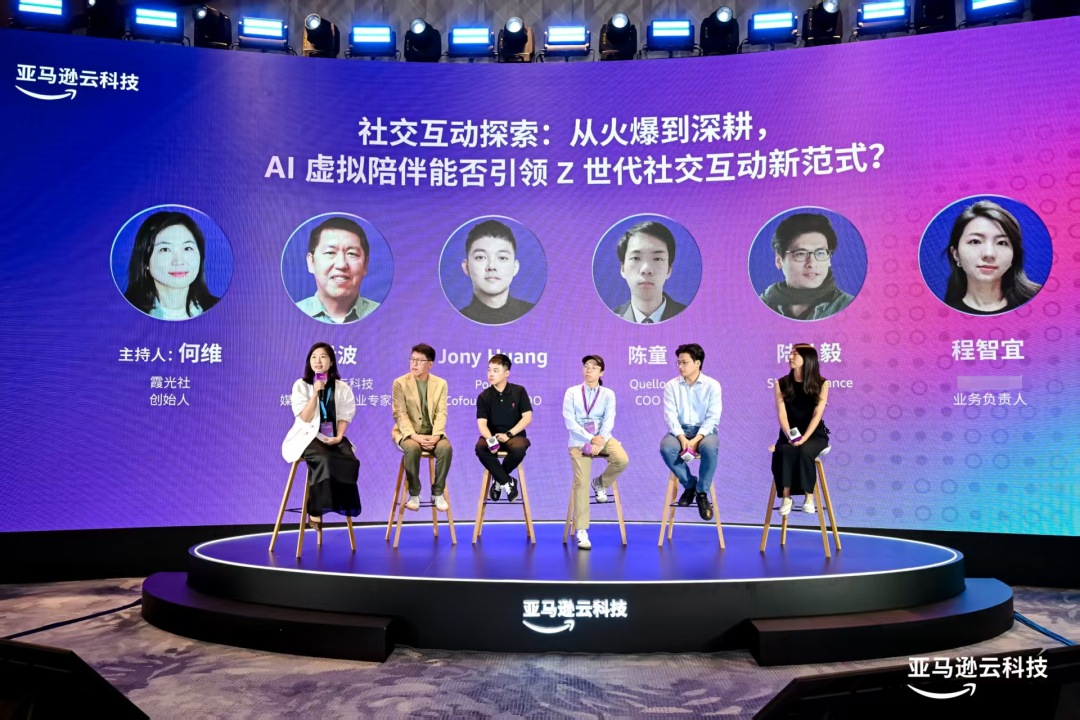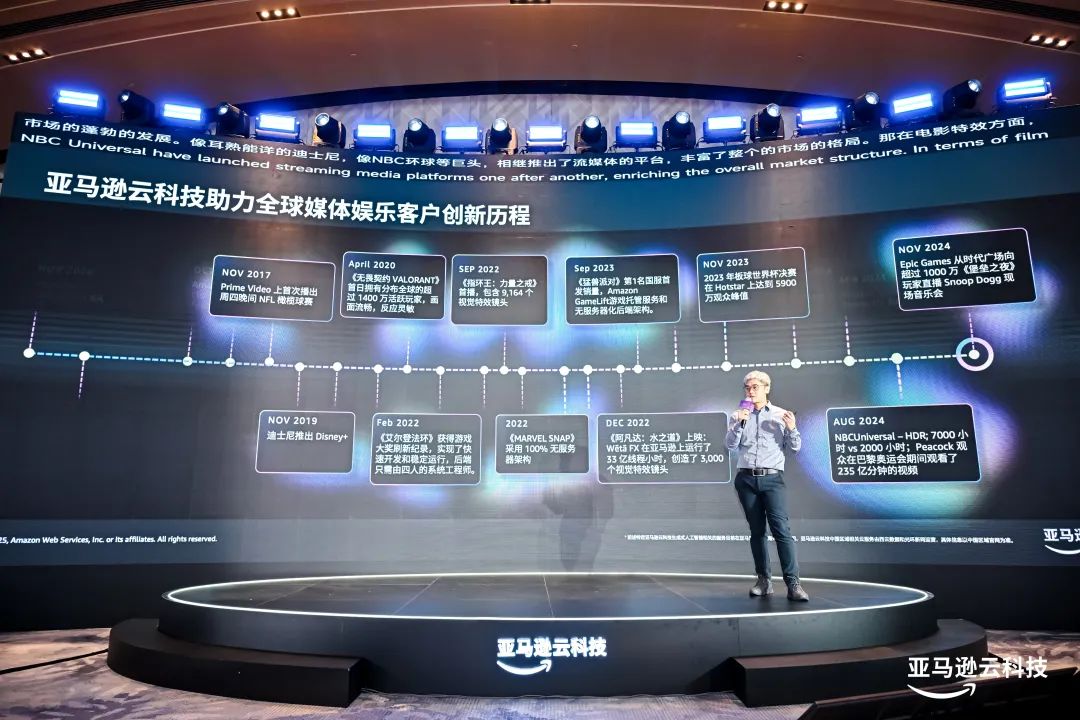AI Virtual Companions Go Commercial: The Business Behind the Algorithms' Lonely Allure
![]() 08/04 2025
08/04 2025
![]() 521
521

Author | Heng Zhi
Editor | Liu Jingfeng
Do you long for a 'perpetually available, ever-patient' companion?
Since last year, there has been a global surge in demand for AI virtual companion products.
According to Appfigure's 2024 annual report, downloads of AI virtual companion apps skyrocketed in the second half of 2024, pushing the annual total to exceed 110 million for the first time. This surge in user base also propelled in-app purchase revenue to $55 million, marking a 652% year-on-year increase.
Amidst this sudden global boom in AI virtual companions, the performance of Chinese enterprises expanding overseas has been particularly noteworthy. What accounts for such rapid growth in this sector within such a short span? How do related enterprises and research teams develop their products? What distinct product positioning, gameplay styles, and unique insights do they bring to virtual companion products? Moreover, despite the rapid growth of the AI companion product market, there are still many deficiencies in product performance. How can these issues be addressed in business practice?
On August 1, during the roundtable session of the 2025 AWS Pan-Entertainment Summit, Xia Guang She founder He Wei, AWS Media & Entertainment Industry Expert Duan Bo, PopUp co-founder and COO Jony Huang, Quello Chief Operating Officer Chen Tong, SingularDance founder Lu Hongyi, and Hello Group Business Leader Cheng Zhiyi discussed how the strong demand for virtual companions among younger generations is driving rapid growth in this field, reflecting the industry's heightened attention to the AI virtual companion sector.

Beyond discussing AI virtual companions, this summit centered on the theme of 'AWS for Media & Entertainment', emphasizing how to provide a comprehensive solution for the content industry, spanning content production, content interaction, to content monetization, and creating the next generation of content experiences.

Since 2023, large AI models have gained immense popularity. Nowadays, their application scenarios have clearly diverged into two paths: one focused on productivity, dedicated to using AI to solve specific tasks in enterprise operations and personal life, and the other focused on pan-entertainment, with a broader scope, of which AI virtual companion products are the most representative.
The explosive growth of AI virtual companions over just one or two years is fueled by the synergy of the 'loneliness economy' and 'generative AI' technology.
Currently, products on the market can be broadly classified into two categories: interactive content and romantic companionship. Interactive content emphasizes gameplay such as character creation, story-based group chats, voice calls, and card draws. Romantic companionship, exemplified by AI robots, includes desktop robots, Biomimetic Cute Pets, etc. These companion products possess anthropomorphic appearances, enabling users to engage in deep dialogues with virtual characters, co-create stories, and obtain continuous, personalized emotional companionship.
During the AWS Pan-Entertainment Summit's roundtable session on August 1, Quello Chief Operating Officer Chen Tong stated, 'Our core focus is to identify and fulfill the genuine needs of users, and from there, we have prioritized emotional perception.'
Chen Tong's team is developing a pet partner AI casual simulation management and cultivation game. Their aim is to create an always-accessible electronic pet. It integrates hardware and electronic services, with companionship as the core experience, allowing users to travel with their electronic pet wherever they go.
He explained that this product creates a vivid and engaging presence for users by constructing a complete worldview and shaping distinct characters, making users feel as if they are truly nurturing a pet that understands their thoughts. When it detects that the user is low in mood, overly tired, or working hard, it will proactively come to keep them company, offering an interactive experience entirely different from the past.
SingularDance founder Lu Hongyi noted that many teams are already working on 'AI virtual companions' products, but people's definitions of 'companionship' vary greatly.
The role of this companion differs significantly from person to person: for older individuals, it may serve as a mentor and friend; for younger people, it can be a sister-like listener, while others envision it as a lover. Regardless, this character must primarily be an independent and lively individual.
He believes that what users truly desire to engage with are individuals possessing independent thinking abilities, a type of personality that cannot be directly derived from general language models. It may require extreme, targeted data shaping, supplemented by continuous retraining, to fully refine it. Therefore, the product cycle for this type is exceptionally long, and the final presentation resembles an independent and lively soul.
He used Japanese writers as an example: a phrase like 'The moon is beautiful tonight' can subtly replace the straightforward 'I love you.' It is this way of expressing beyond logic, relying on intuition and resonance, that constitutes the fundamental difference between emotion and rationality.
The 'loneliness economy' has cultivated a massive potential user base, while the synergy of 'generative AI' has compressed the originally high costs of emotional modeling and content production to a commercially viable technical level. This has created a boon for the global explosion of AI virtual companions.


As young people increasingly prioritize 'emotional consumption,' their quest for emotional companionship in the virtual world has gradually become a rigid demand, driving the rapid expansion of AI companion products.
However, virtual companion products still grapple with issues such as memory gaps, high costs, inability to perfectly restore IP texture, lingering machine-like feel, and emotional distortion. These are pain points that users frequently complain about, differing from productivity scenarios that require precise answers and complex reasoning. The core demand for AI in companion scenarios is more 'simple'—it necessitates a second-level response, accurately capturing user intent, and providing emotional feedback akin to that of a real person.
Multiple cases shared by roundtable guests also confirm that technological limitations result in AI still being weak in emotional expression, memory coherence, and character restoration.
SingularDance founder Lu Hongyi said that currently, the training of all large language models is almost entirely focused on the purely logical level. However, emotional expression does not adhere to the same rules; it resides in a higher-dimensional space and is often difficult to present with a clear and verifiable logical chain.
Hello Group Business Leader Cheng Zhiyi mentioned that current AI virtual companion products are constrained by technological limitations, making it challenging to maintain users' emotional connections during long-term companionship, as well as exhibiting weak long-term memory capabilities and lacking a dynamic personality evolution mechanism, constituting core bottlenecks that the industry still needs to overcome.
The core technological dilemma lies in the sharp contradiction between the demand for real-time multimodal interaction and limited computing power, as well as the enormous challenge of emotion recognition in cross-language and cross-cultural contexts.
Regarding the synergy of generative AI, AWS Media & Entertainment Industry Expert Duan Bo said that during AWS's interactions with numerous customers, it has been observed that continuously accumulating a vast amount of real dialogue data is of great significance.
He stated that current AI solutions generally target users from Generation Z, with a focus on young women and individuals with social anxiety. These groups are active on various platforms, and each platform's unique tone is formed through daily, real, and intensive dialogue. The so-called 'warmth' also stems from this: as long as a product involves social chatting, it can accumulate massive real data imbued with emotions and contexts.
Furthermore, in his view, AI virtual companion products can introduce gamification design and inherently possess multiple advantages.
The first is immersive experience—users grow, level up, fight monsters, cheer each other on, and collaborate to achieve goals alongside their digital avatars. The underlying logic of this mechanism is the cycle of 'reward-frustration-reward again,' first overcoming moderate frustration before a significant reward, followed by reinforcement with new rewards. Most importantly, this process is extremely easy to implement in AI companion scenarios.
Faced with technical challenges, AWS has also provided a demonstration: in a demo, the AI virtual companion product first accurately identifies the black phone back in the video frame and locks in the specific time, then engages in natural dialogue with the user, showcasing its comprehensive capabilities in content recognition, real-time interaction, and cross-language support throughout the process.
AWS Greater China Solution Architect General Manager Dai Wen summarized, 'In this brief demo, you saw that it can not only recognize content but also interact in real-time and switch between languages. Behind typical scenarios such as merchant companionship, voice chat, and streaming media push, there are vast application possibilities.'

AWS's technical role in AI virtual companion products spans multiple dimensions.
It enables cross-language dialogue capabilities, with products capable of real-time Q&A with users in both English and Chinese, such as inquiring about the current time or the color of an object. Relying on Amazon's speech understanding and generation technology, the system also supports natural and smooth speech interaction, completing a closed loop from instruction recognition to speech feedback.
With content recognition and interaction capabilities, AI can instantly identify objects in the video frame during video viewing and engage in dialogue around that object. At the language support level, the system continues its advantage of multilingual interaction, continuously serving users in both Chinese and English. Through deep integration with the Agora platform, it can also realize converged media content distribution, further optimizing cross-terminal experiences. Utilizing Amazon's semantic understanding engine, AI can also parse complex contexts and provide more intelligent, scenario-appropriate companionship dialogue.
The core barrier of AI companion applications lies in product strength, and Chinese enterprises have established advantages in this dimension by leveraging the engineer dividend and extreme product refinement capabilities. As the level of AI intelligence continues to advance, the penetration speed of such products in pan-entertainment scenarios is bound to further accelerate.

The biggest hurdle for the domestic implementation of AI companion products is not technology, but 'how to get users to pay.'
SingularDance founder Lu Hongyi mentioned in the roundtable discussion that a mature subscription mindset has yet to form in China, making the commercialization of AI companion products far more challenging than overseas.
Overseas consumers bind their credit cards and almost 'forget' about the monthly automatic deductions, while domestic users are accustomed to free products and have not developed a payment habit. He believes that AI products are inherently highly dependent on the subscription model, and it is regrettable if they are only sold as a one-time purchase. Therefore, in his view, the commercialization difficulty of AI in China is much higher than overseas.
Moreover, in the process of AI virtual companion products expanding overseas, cultural differences and user preferences have always been thresholds that are difficult to bypass in design.
Lu Hongyi provided an example: European and American comics and character images tend to have direct lines and outward emotions, with straightforward storytelling. In contrast, East Asian users prefer subtle, progressive interaction rhythms. This aesthetic gap, from the pace of story progression, character personality settings, to interaction path planning, must be addressed in localized design.
PopUp co-founder and COO Jony Huang believes that the role of AI as a function is to help users address the problem of social depth. 'We are no longer pursuing breadth but rather addressing users' demands for depth.'
He stated that based on the current data available, they have already validated the effectiveness and sustainability of the AI solution and will further test its commercialization potential in different countries and regions.
He believes that for further development, the core pain points are somewhat similar: one is whether it can be continuously operated, and the other is whether it can establish emotional resonance with users. Whether domestic or overseas, human nature is universal, so in the future, the primary focus should be on continuously meeting users' long-term needs for high-quality, deep social interactions, genuinely responding to their emotional demands in specific scenarios, thereby enhancing users' willingness to pay.
Hello Group's Business Leader Cheng Zhiyi emphasized that true intelligence is not merely about instantaneous responses; it also encompasses memory, capable of continuously preserving and updating shared experiences. As time elapses and events accumulate, its responses evolve accordingly. Initially, it might exhibit a particular personality, but following interactions, it seamlessly transitions to another. It is this intricate human trait of continuous evolution through memories and experiences that they aspire to replicate in their model.
Only when a long-lasting and stable emotional connection is forged between users and virtual characters, and this connection is maximized through AI technology tools, can AI virtual companions truly transition from a 'transient trend' to 'commercial viability'.
Furthermore, during the speech session, Wang Rong, Head of AWS China's Media & Entertainment Industry, systematically elaborated on AWS's role in areas such as social content and interaction commercialization.
Firstly, leveraging professional technical capabilities, AWS offers a 'comprehensive technical service matrix that spans the entire chain from media content production, transmission, distribution, to user operations, all built upon AWS's robust infrastructure.'
Secondly, relying on generative AI capabilities, AWS states, 'By empowering AI technology, we aid customers in achieving groundbreaking innovations across content creation, distribution, user operations, and other facets, enhancing production efficiency while providing users with unparalleled personalized experiences.'
Lastly, through partnerships and innovative resources, AWS states, "By integrating the high-quality innovation capabilities of our partners, we offer customers diverse solutions, selecting an ecosystem that fosters openness and mutual benefits, thereby better addressing customers' personalized needs."

The summit was dedicated to showcasing the latest advancements in content production across film, television, streaming media, short dramas, social media, and diverse entertainment platforms. It demonstrated how AI and cloud technology are reshaping and extending the entire content value chain, unlocking boundless possibilities for future innovation.
The conference systematically presented Amazon Web Services' (AWS) end-to-end innovation solutions for the content industry, catering to a wide array of needs from content production, interactive experiences, to commercial monetization. Global content creators, platform providers, and technology experts converged to share the latest practices. Independent creators, content platforms, and advertising technology partners gained valuable insights into industry trends, connected with global resources, and collaboratively explored the future trajectory of the content industry.
Disclaimer
Please note that the aforementioned AWS generative AI-related services are currently available in AWS overseas regions. The relevant cloud services in AWS China regions are operated by Sinnet and GII. For specific information, please refer to the official website of the China regions.








